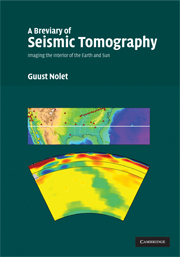Refine listing
Actions for selected content:
16933 results
2 - The stars and stellar evolution
- from Part I - Astronomical background
-
- Book:
- High Energy Astrophysics
- Published online:
- 05 June 2012
- Print publication:
- 03 February 2011, pp 35-76
-
- Chapter
- Export citation
Part II - Physical processes
-
- Book:
- High Energy Astrophysics
- Published online:
- 05 June 2012
- Print publication:
- 03 February 2011, pp 129-130
-
- Chapter
- Export citation
Part III - High energy astrophysics in our Galaxy
-
- Book:
- High Energy Astrophysics
- Published online:
- 05 June 2012
- Print publication:
- 03 February 2011, pp 331-332
-
- Chapter
- Export citation
Appendix: Astronomical conventions and nomenclature
-
- Book:
- High Energy Astrophysics
- Published online:
- 05 June 2012
- Print publication:
- 03 February 2011, pp 753-782
-
- Chapter
- Export citation
3 - The galaxies
- from Part I - Astronomical background
-
- Book:
- High Energy Astrophysics
- Published online:
- 05 June 2012
- Print publication:
- 03 February 2011, pp 77-98
-
- Chapter
- Export citation
12 - Interstellar gas and magnetic fields
- from Part III - High energy astrophysics in our Galaxy
-
- Book:
- High Energy Astrophysics
- Published online:
- 05 June 2012
- Print publication:
- 03 February 2011, pp 333-377
-
- Chapter
- Export citation
Name index
-
- Book:
- High Energy Astrophysics
- Published online:
- 05 June 2012
- Print publication:
- 03 February 2011, pp 825-828
-
- Chapter
- Export citation
4 - Clusters of galaxies
- from Part I - Astronomical background
-
- Book:
- High Energy Astrophysics
- Published online:
- 05 June 2012
- Print publication:
- 03 February 2011, pp 99-128
-
- Chapter
- Export citation
16 - The origin of cosmic rays in our Galaxy
- from Part III - High energy astrophysics in our Galaxy
-
- Book:
- High Energy Astrophysics
- Published online:
- 05 June 2012
- Print publication:
- 03 February 2011, pp 536-560
-
- Chapter
- Export citation
Acknowledgements
-
- Book:
- High Energy Astrophysics
- Published online:
- 05 June 2012
- Print publication:
- 03 February 2011, pp xvii-xxii
-
- Chapter
- Export citation
10 - Nuclear interactions
- from Part II - Physical processes
-
- Book:
- High Energy Astrophysics
- Published online:
- 05 June 2012
- Print publication:
- 03 February 2011, pp 279-297
-
- Chapter
- Export citation
Frontmatter
-
- Book:
- The Cambridge Atlas of Herschel Objects
- Published online:
- 04 February 2011
- Print publication:
- 27 January 2011, pp i-iv
-
- Chapter
- Export citation
Star Charts
-
- Book:
- The Cambridge Atlas of Herschel Objects
- Published online:
- 04 February 2011
- Print publication:
- 27 January 2011, pp 37-102
-
- Chapter
- Export citation
Appendix B - The Cambridge Atlas of Herschel Objects target list
-
- Book:
- The Cambridge Atlas of Herschel Objects
- Published online:
- 04 February 2011
- Print publication:
- 27 January 2011, pp 106-183
-
- Chapter
- Export citation
Introduction
-
- Book:
- The Cambridge Atlas of Herschel Objects
- Published online:
- 04 February 2011
- Print publication:
- 27 January 2011, pp 1-36
-
- Chapter
- Export citation
Appendix A - Constellation table
-
- Book:
- The Cambridge Atlas of Herschel Objects
- Published online:
- 04 February 2011
- Print publication:
- 27 January 2011, pp 103-105
-
- Chapter
- Export citation
Contents
-
- Book:
- The Cambridge Atlas of Herschel Objects
- Published online:
- 04 February 2011
- Print publication:
- 27 January 2011, pp v-vi
-
- Chapter
- Export citation

A Breviary of Seismic Tomography
- Imaging the Interior of the Earth and Sun
-
- Published online:
- 24 January 2011
- Print publication:
- 25 September 2008
2 - Some remarks about uses of cosmological anthropic ‘principles’
- from Part I - What is life?
-
-
- Book:
- Origins and Evolution of Life
- Published online:
- 04 February 2011
- Print publication:
- 06 January 2011, pp 14-25
-
- Chapter
- Export citation
19 - Molecular phylogeny: inferring the patterns of evolution
- from Part V - Mechanisms for life evolution
-
-
- Book:
- Origins and Evolution of Life
- Published online:
- 04 February 2011
- Print publication:
- 06 January 2011, pp 291-312
-
- Chapter
- Export citation
